We had an exciting three-day exploration ahead of us in Northern Morocco.
Through our friends, we got in touch with a Moroccan female guide named Nisrine. She is the first Moroccan female tourist guide who also serves as a driver with her own car for tourist groups. Nisrine picked us up from the boat on Saturday morning, and we set off towards Chefchaouen.
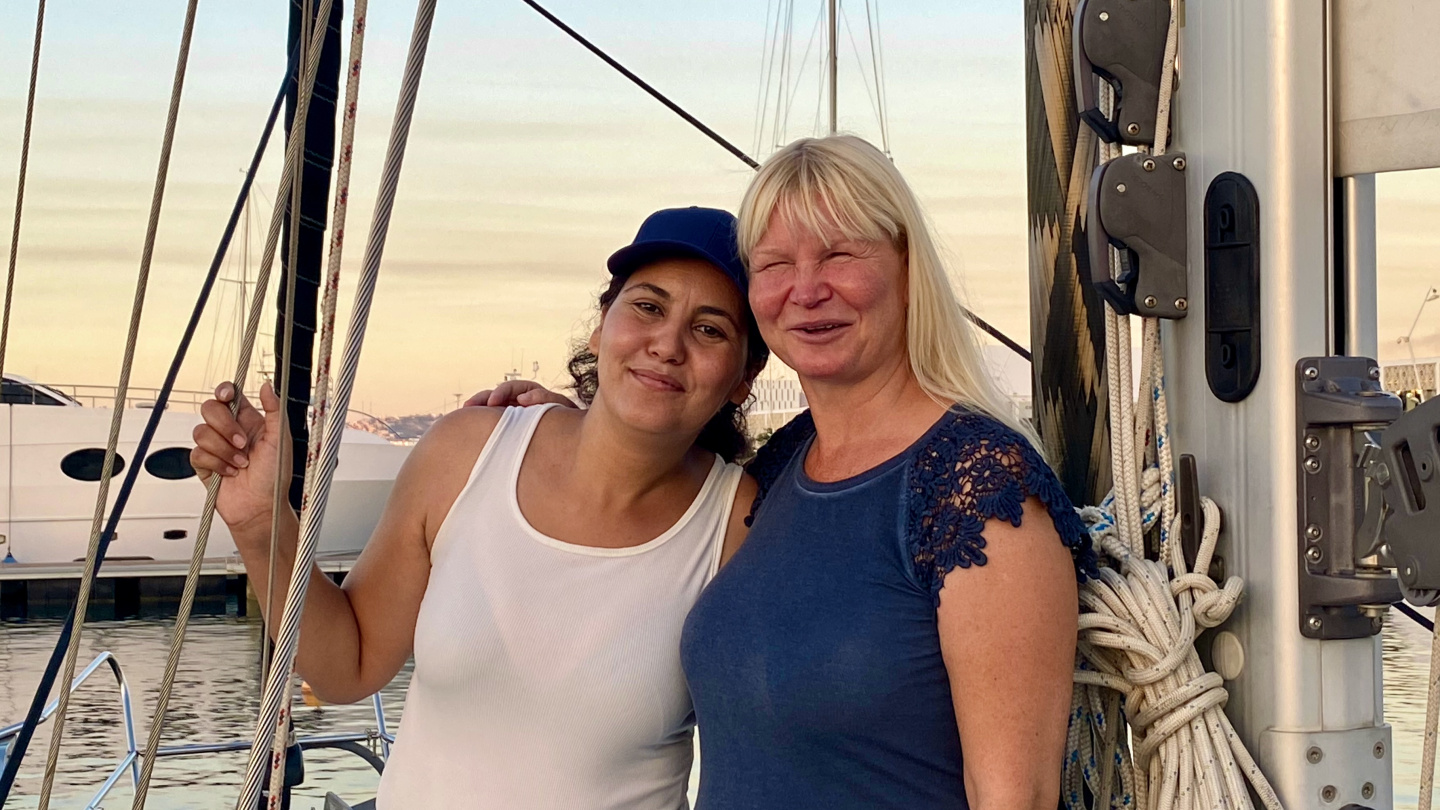
The first stage was to drive to the Rif Mountains and the city of Chefchaouen. The mountain landscapes were truly stunning as we drove through forests and fields. Occasionally, we stopped to admire the scenery. We were amazed when we found coniferous forests in Morocco.

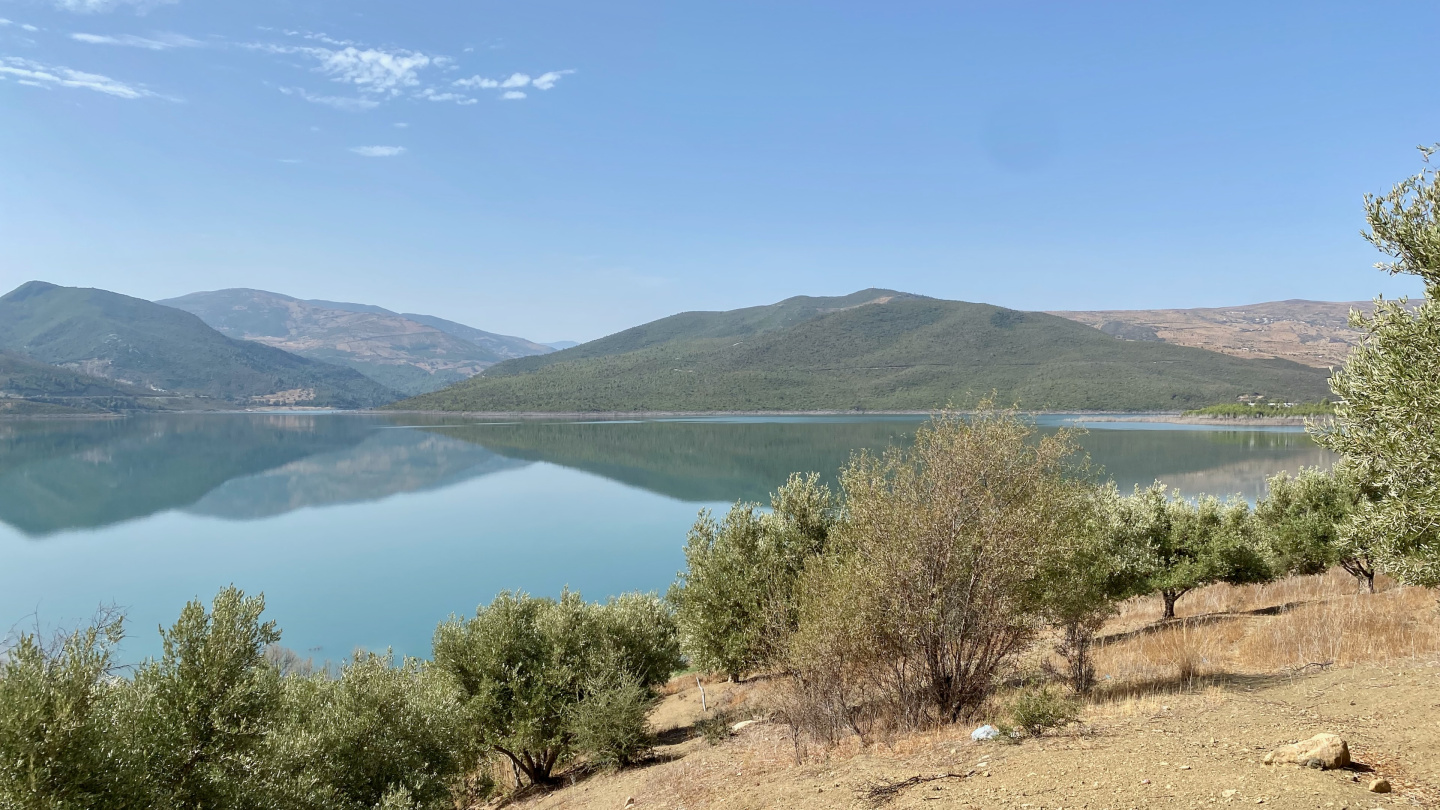

Upon arriving in Chefchaouen, someone from the hotel came to the parking lot to collect our bags and guided us through narrow winding alleys to our riad. Riad Asilah was a cozy boutique hotel with eight rooms. First, we enjoyed Moroccan mint tea, where we could choose to have it with or without sugar. With sugar, it is super sweet and surely appeals to those with a sweet tooth. We chose sugar-free, and it was delicious and refresing on a hot sunny day.
In the afternoon, we wandered with Nisrine through Chefchaouen’s blue alleys. The medina was bustling with people. Despite that, the streets were remarkably clean and tidy. The Blue City is indeed very blue. The walls, doors, window frames, and even some streets were painted blue. Apparently, someone painted their house blue, and it started a trend, and now Chefchaouen is known as the blue city that attracts thousands of tourists every year. On the other hand, there are various stories about the reasons behind the blue color.




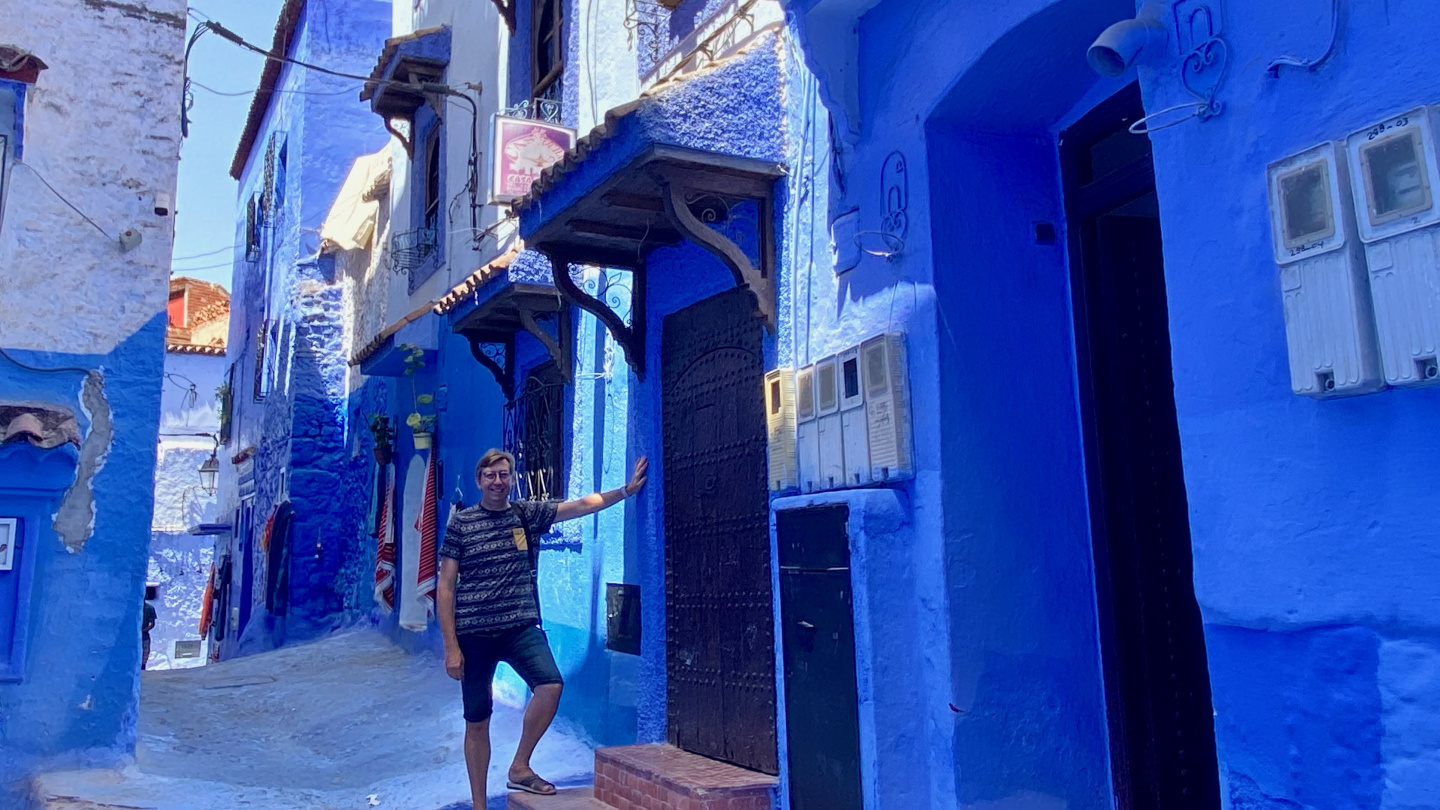
Along the alleys, there was a variety of handicrafts available. While most people seemed focused on their Instagram photos, the locals were busy with their own work. There were Moroccan bread bakers, copper workers, lace and leather goods sewers, carpenters, and painters. The craftsmen were genuinely cheerful and relaxed in their work. There was no tension like in tourist areas, even though it was crowded. We also enjoyed freshly squeezed orange juice to cool off on a hot day – oh, it was refreshing.
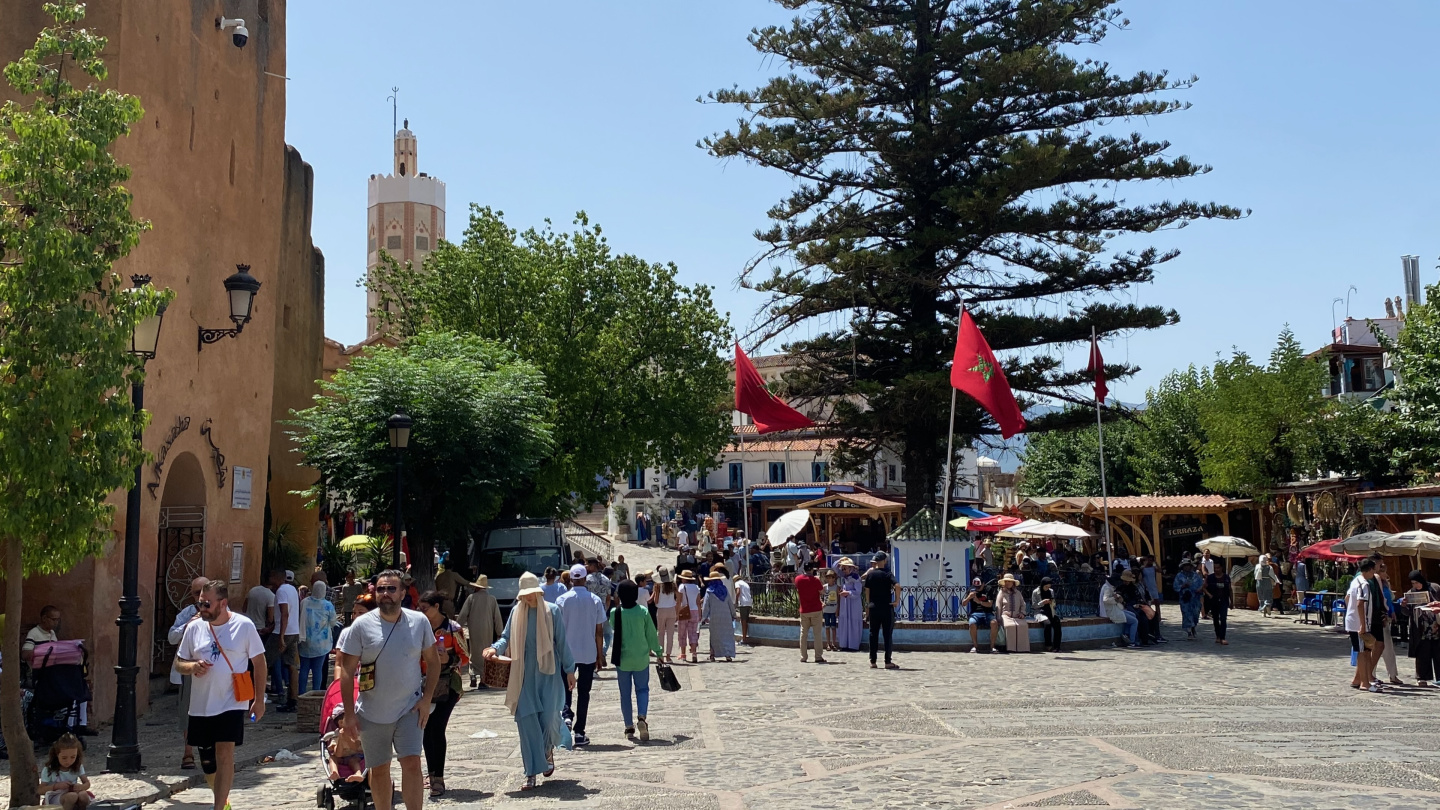
In Chefchaouen, we tasted our first tagine dish. Moroccan tagine is prepared in a conical pot. It seemed you can make any dish in it, such as goat with prunes, lamb with almonds, meatballs in tomato sauce, and even in Fes, we had an omelet for breakfast made in a tagine pot – delicious.
On Sunday, we headed south towards the city of Fes. We descended 530 meters to the plateau. Serpentine roads twisted along the cliffs. Soon, the coniferous forest was left behind, and vast fields began. The murmuring mountain springs of Chefchaouen turned into dry fields. In a dry areas, there is truly a lack of water, and we saw how people still fetch their water barrels with donkeys to villages without their own well.

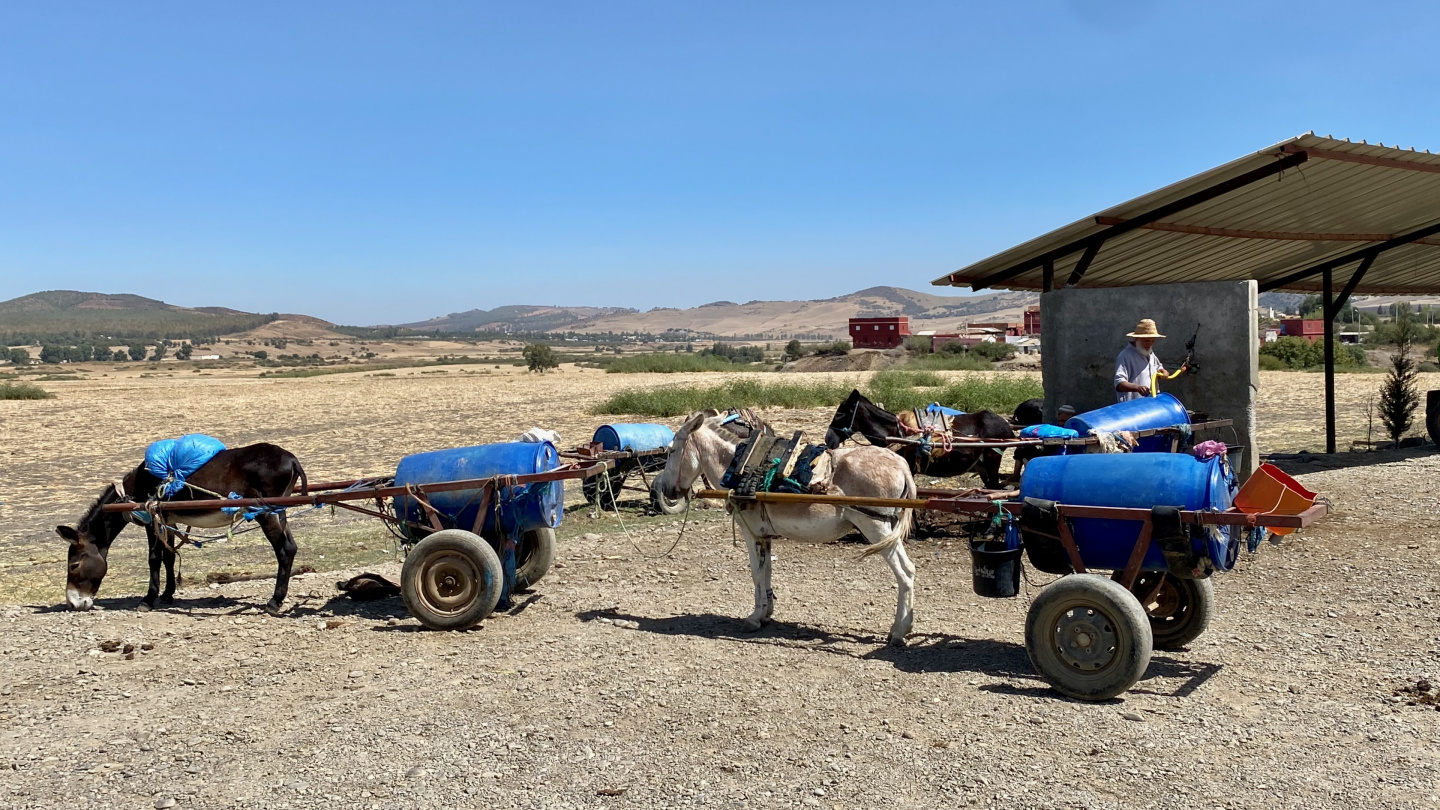
Police monitored all entrances to the towns. Cars had to stop, and some were inspected. We were asked about our nationality. ”Finlandia” was sufficient, and we continued our journey.
In Fes, we stayed in another riad again. Traditionally, a riad has an open courtyard surrounded by residential floors. Both of our accommodations had a glass-roofed courtyard, and in the riad in Fes, it was even retractable. The houses remained wonderfully cool, and you could stroll through the courtyard during the daytime, even though the sun was blazing outside at 40 degrees Celsius.
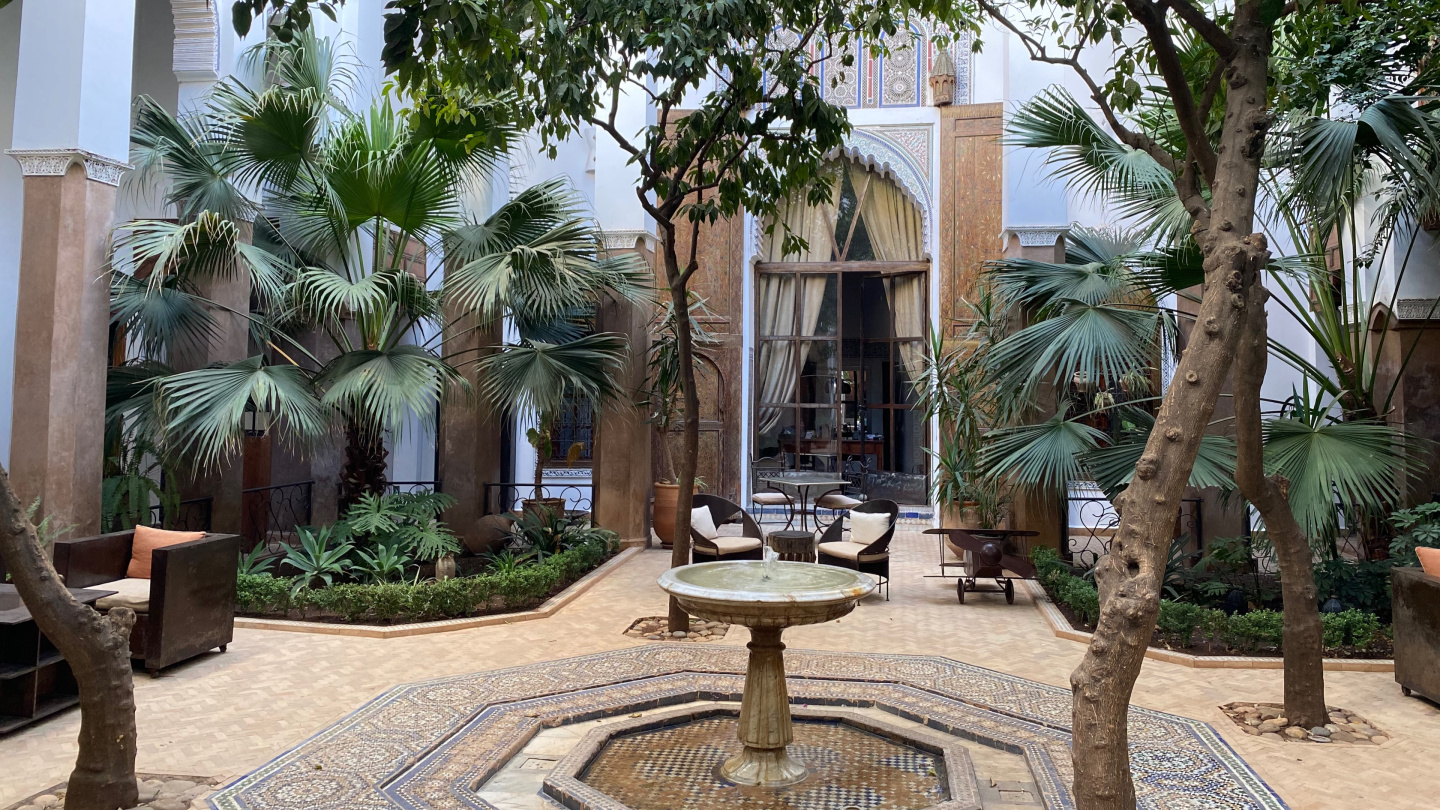
After a long drive, we went to relax in a hammam with hot stone slabs and aromatherapy massage. Completely relaxed and with velvety smooth skin, we enjoyed dinner in a sweet restaurant that used to be a palace. During dinner, we also got to experience Moroccan traditional music with Moroccan belly dancers.
Fes is famous for having the largest medina or old town in Morocco with over 7000 alleys. Fes medina is also the world’s largest car-free area. Again, the narrow alleys were very clean and tidy. In the mornings, garbage bags were collected from the streets on donkey-drawn carts, and we often saw them washing the streets. In Fes medina, people still live and make their living, so it’s not just a facade for tourists; we really got to experience the normal hustle and bustle of medina life.
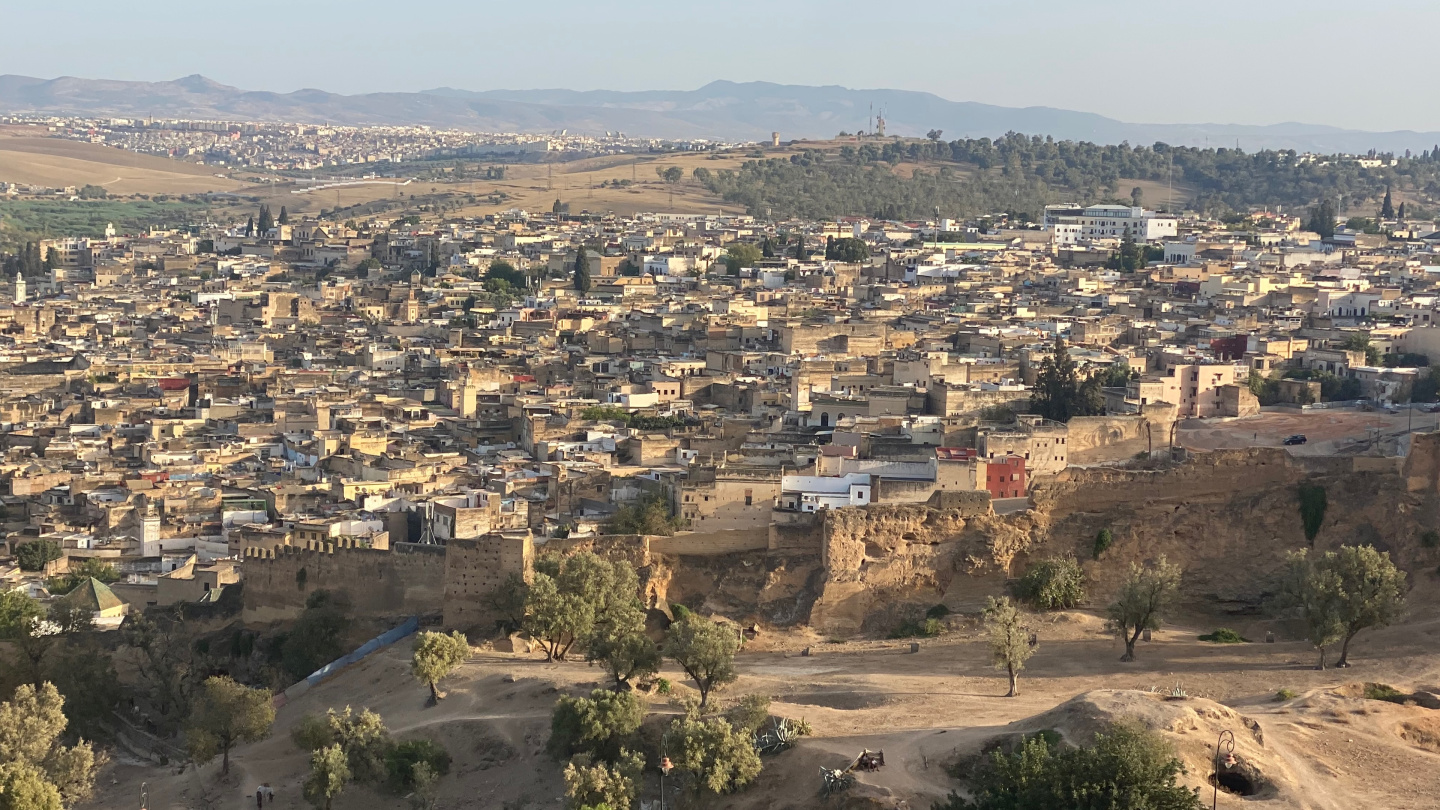
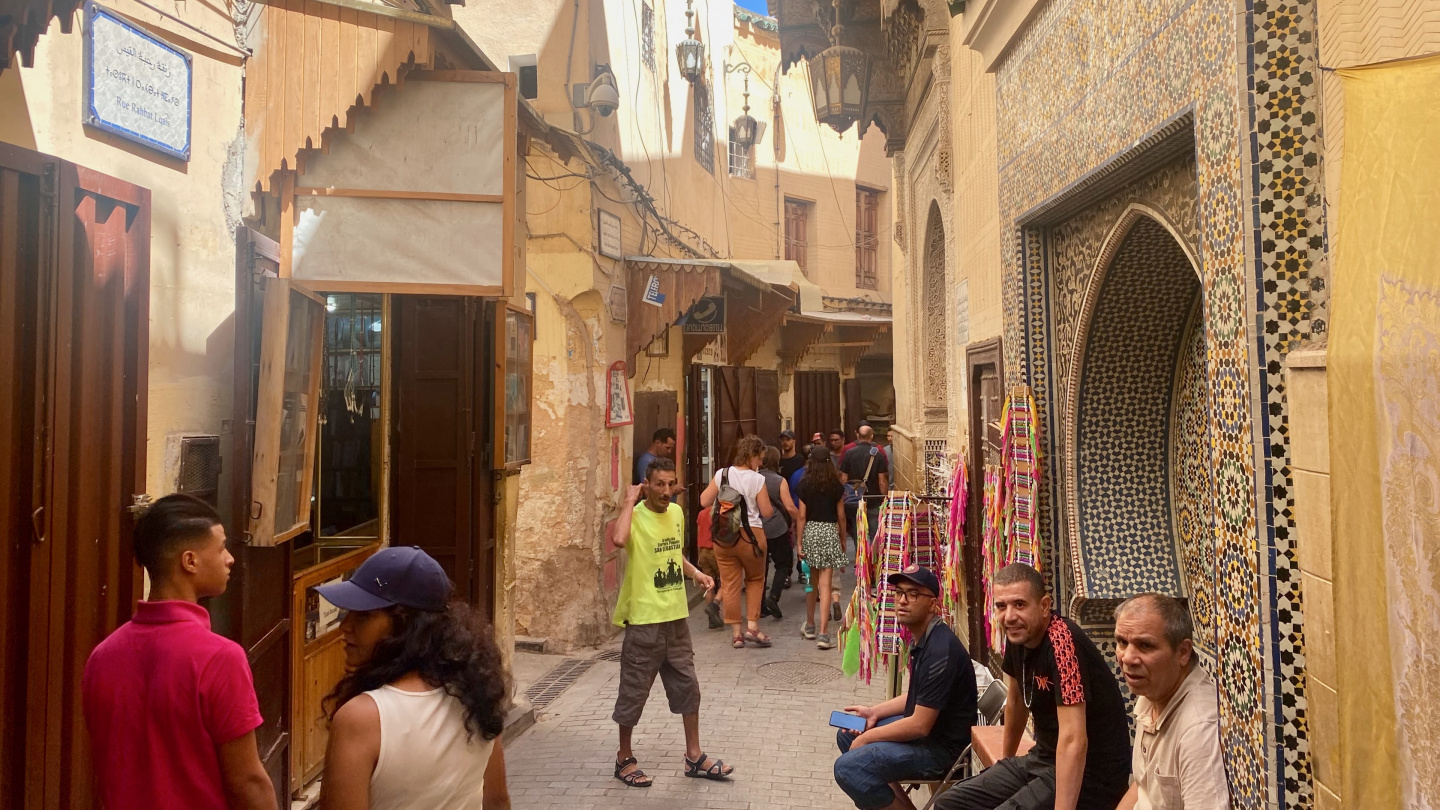
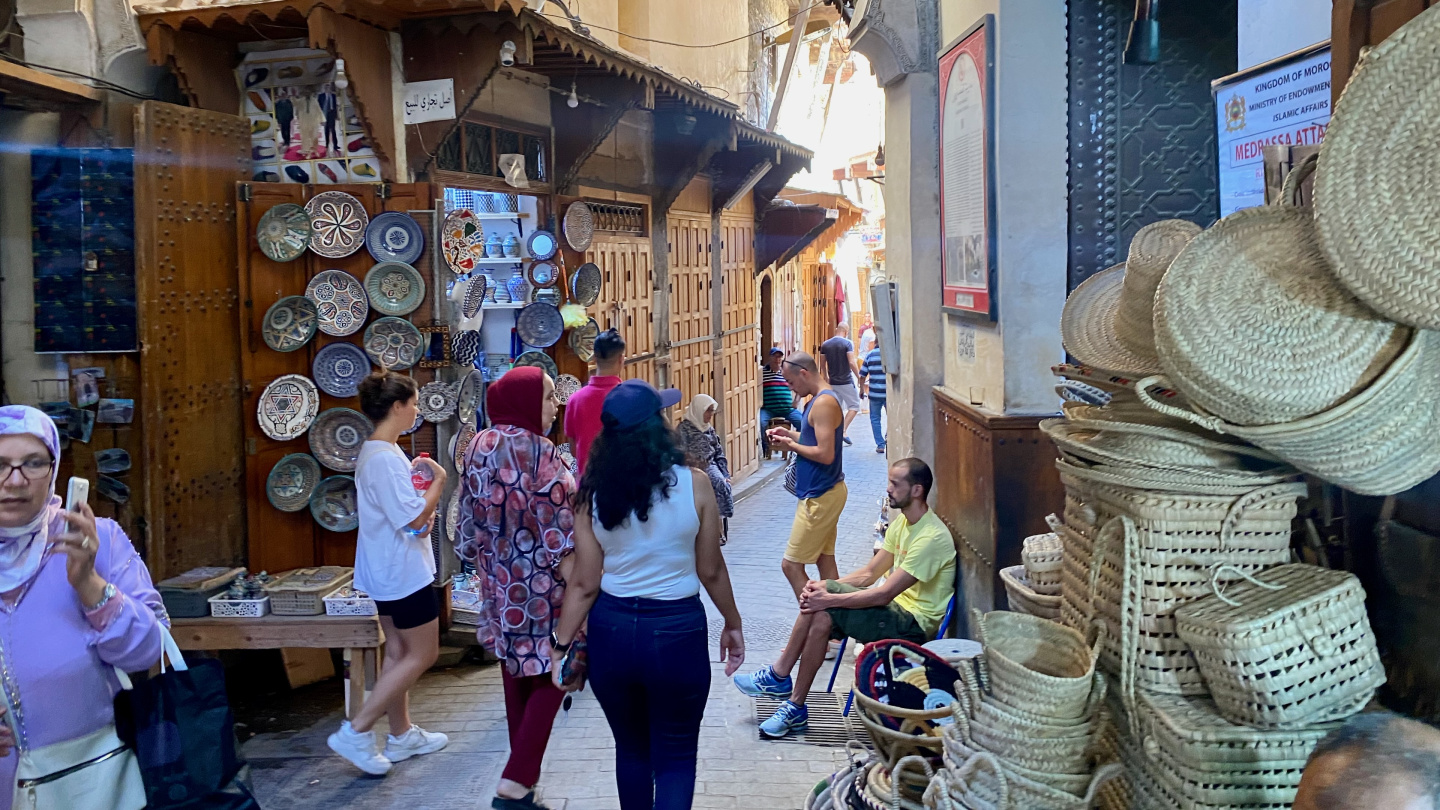

Medina has been built since the 12th century. Alley by alley and house by house, it has expanded over time. There are seven gates leading to it, and Nisrine mentioned that, as a “Fezian,” she sometimes gets lost in the medina. No wonder, as the alleys twisted here and there. Some alleys were so narrow that we could barely walk through them one by one. It felt like stepping a thousand years back into an oriental fairy tale.


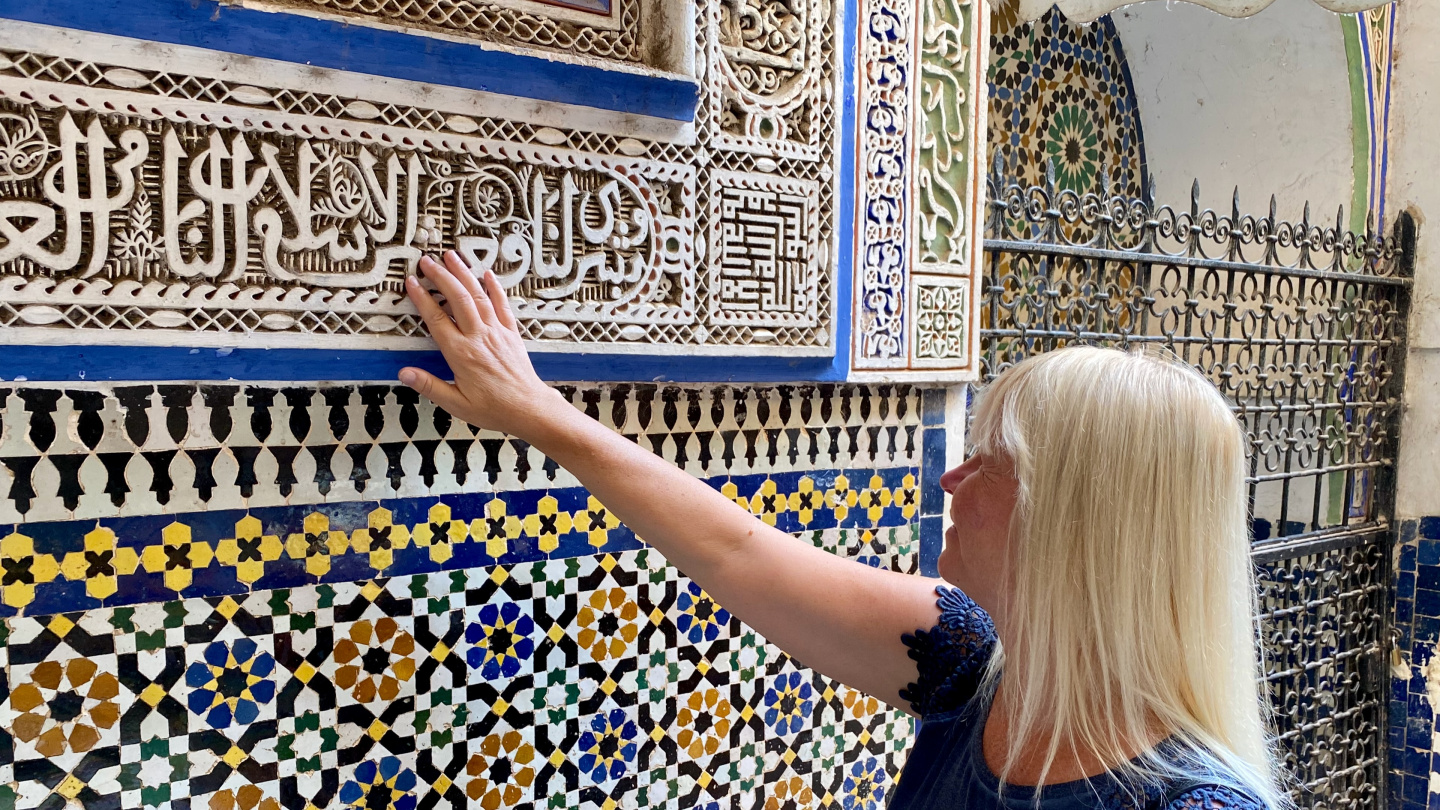
One of Morocco’s specialties is argan oil. I told Nisrine that I’d like to buy argan oil, and she found a place where the oil was freshly prepared for us to take home. It was fascinating to see how the almond-like interior was extracted from the nut-like argan fruit, from which the oil is made. I got to prepare the oil myself. Argan oil instantly absorbes into the skin, leaving it incredibly smooth. There is also a culinary version of argan oil, where the interior of the argan fruit is roasted. We left that for the next time to try.

We also visited a tannery where leather is traditionally processed. Nisrine led us to the tanner’s workshop, or should I say the multi-story leather factory. As soon as we entered, each of us received a mint sprig to sniff because the traditional treatment odors of the leather were quite intense. Tanners lifted the leather from one vat to another, depending on the processing stage. Tradition has been continued from fathers to sons for over 500 years in the same house here in Fes.

On Monday evening, two tired but extremely satisfied sailors returned to the boat. The best thing to do upon arriving in Tangier is to take an exploration deeper into Morocco. This way, we got to experience and see the real life of Moroccans. Morocco is a land of contrasts. On one hand, TGV high-speed trains zoom from Tangier to Casablanca, while in other places, water is still carried by donkeys to poor villages without wells. In the medinas, time seemed to have stopped in the past, while modern supermarkets and shopping malls are found in the new parts of the cities.
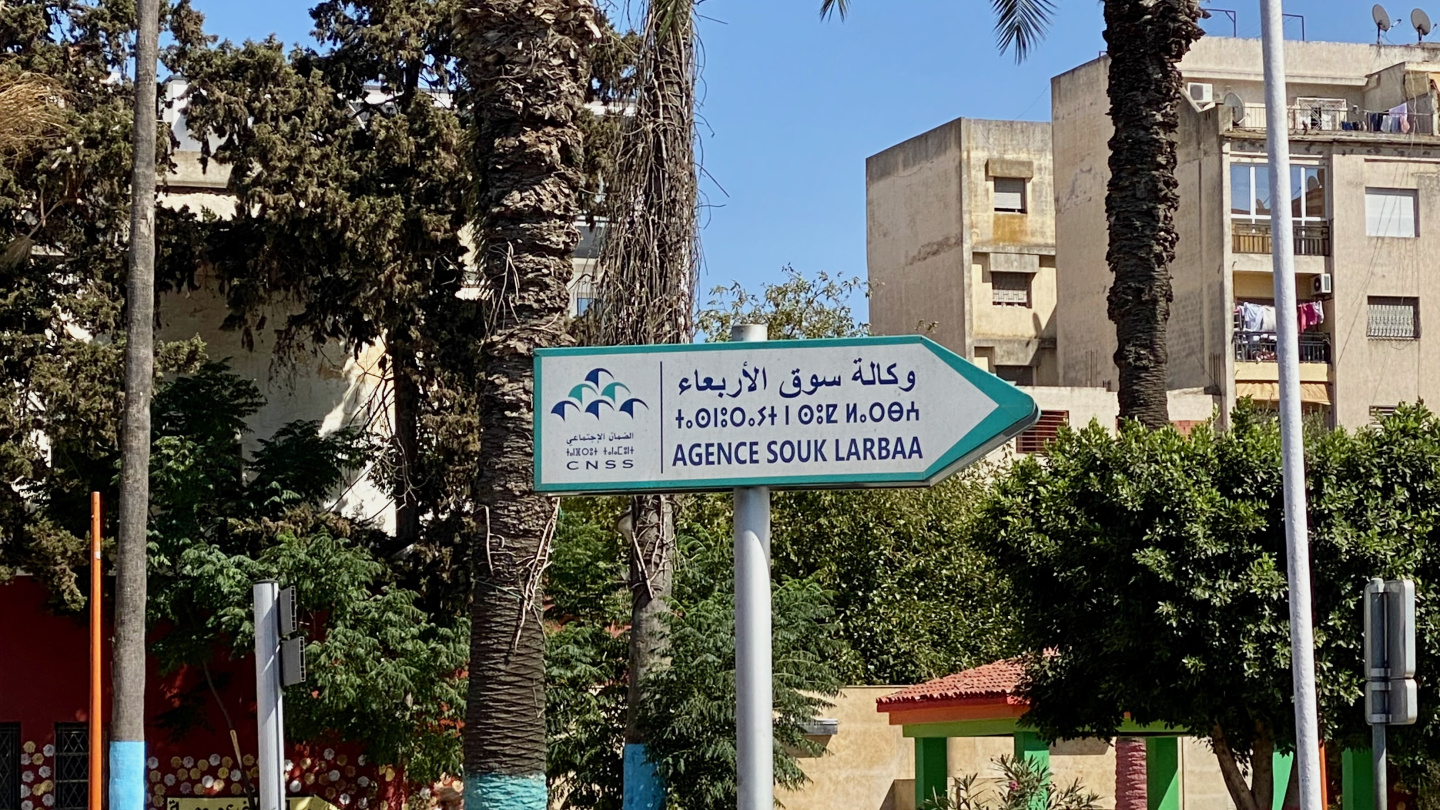
We would like to warmly and whole heartedly thank You Nisrine. You were great guide. See You next time in Morocco.
Leaving Morocco turned out to be a more exciting experience than we could have imagined. First, we went to the harbor office to complete the checkout. After that, we moved the boat back to the reception dock, where Andrus went to take care of the departure procedures with passports and the boat’s customs document. Soon he returned to the boat and told that customs wanted to check our boat again. A group of ten people dressed fully in black arrived with a drug dog. We were ordered out of the boat with a strict “out” command, and Kelly, the dog, got to work sniffing every corner. Then Andrus was asked to open the cabinets and floor hatches. Finally, they slammed the engine compartment hatch shut so forcefully that the helmsman’s chair flew into the aft cabin, and our beautiful wooden chair cracked. While the boat was being searched inside, other men rummaged through all the compartments on the deck. Clearly, there was some higher authority involved, in addition to the customs officials from the harbor. We were told that previous day, they had apparently found illegal substances on some boat, and now they were thoroughly inspecting all boats leaving the country. We got a clean bill of health, and so our journey continued along the coast of Africa towards our next destination, Ceuta.

